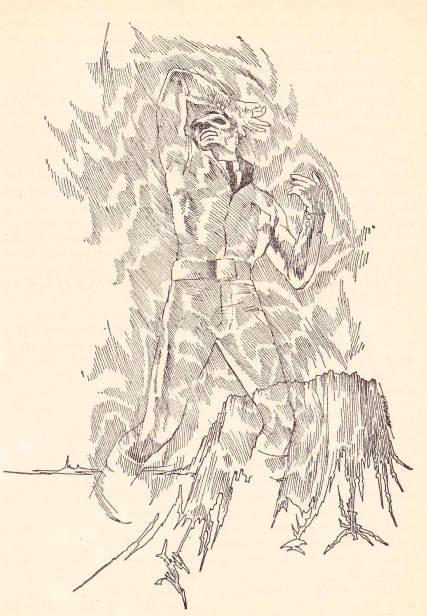
by Victoria Silverwolf
The Times, They Are A-Changin'
You don't have to be a sociologist to realize that the past few years have been one of cultural upheaval. The hippies, the struggle for civil rights, protests against the war in Vietnam; I could go on and on.
An example happened one week ago, when hundreds of women protested at the Miss America pageant. They asked to be treated as human beings, not as stereotyped images of artificial standards of beauty.

Members of the emerging Women's Liberation movement toss things like stiletto heels, makeup, and copies of Playboy magazine into a symbolic garbage can.
A recurring theme of these social changes is the desire for freedom. It can even be seen in popular culture. For nearly a month, for example, the number one song in the USA has been People Got to be Free by the Rascals.

They seem very serious about it.
This is a laudable goal, of course, and there's a long way to go before we can truly say that oppressed groups are liberated. An optimist might say we're halfway there.
Speaking of halfway . . .
Four of One, Half an Octad of the Other
I've been griping for quite a while about Fantastic filling its pages with reprints, along with one or two new stories per issue. Maybe somebody at the magazine heard me. Of the eight stories in the latest issue, only half are reprinted. That's progress!

Cover art by Frank R. Paul.
You can see the cover screaming New at you. Ironically, the cover art is old. It served as the back cover of the March 1945 issue of Amazing Stories.

As you can see, they reversed it, covered up a pretty big part of it, and just generally made it look worse.
Did I say halfway? The four new stories take up somewhere between one-quarter and one-third of the magazine. They're all clustered together at the front.
The Sound of Space, by Ross Rocklynne
A spaceman returns from a two-year voyage to Alpha Centauri. He shows up at Triton, a moon of Neptune, where his fiancée is waiting for him.
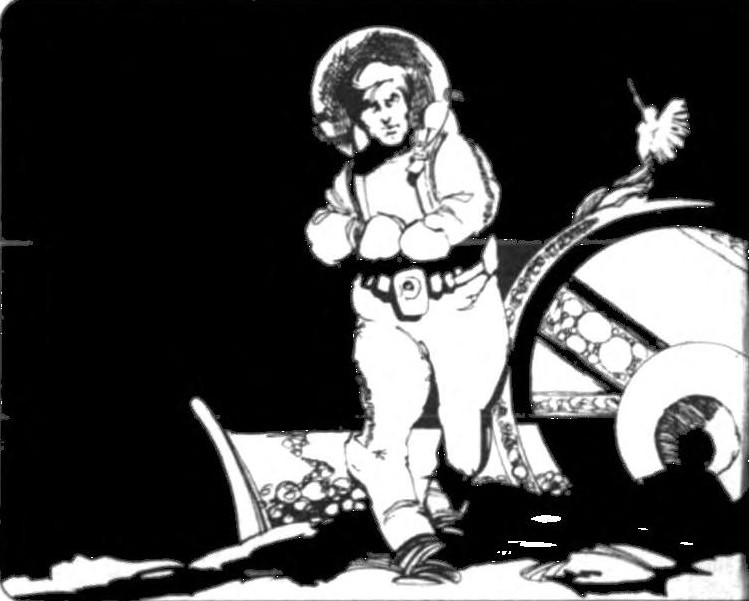
Illustration by Jeff Jones.
She's upset because he hasn't aged at all. (This is supposedly an effect of weightlessness, which seems unlikely to me.) She also doesn't like the fact that space travelers are notorious for being irreligious. She takes him to church, and tells him that she's going to marry the pastor unless he goes back to Earth and ages in its gravity. The spaceman comes up with a wild scheme to show the woman and the pastor what deep space is really like.
The premise of gravity being the cause of aging isn't exactly plausible, to say the least. The story is written in an odd style, with verbal quirks. The woman inserts a fair amount of French into her speech. People often talk in flowery language that doesn't sound like anything anybody would really say. Folks are often referred to as Sir So-and-So (such as Sir Preacher); the spaceman even calls mortality Sir Death.
Two stars.
The Dragons of Telsa, by Arthur Porges
As an example of the care with which the magazine is put together, the cover and the table of contents call this yarn The Dragons of Tesla (note the change in spelling.)
Anyway, this is the latest in a series of science lessons disguised as fiction featuring the clever Ensign De Ruyter. In this tale, he and his captain explore the planet Telsa (not Tesla). It's hot and has an atmosphere without oxygen. There are a huge number of dangerous reptilian predators around.
(Herds of hundreds and hundreds of predators? That seems unlikely, given the typical predator-to-prey ratio you'd expect.)
After wiping out a whole bunch of the beasts with their ray guns, the unlucky pair run out of the energy that powers their weapons. They go hide in a cave, which just happens to have exactly the stuff that De Ruyter needs to save the day.
As I may have suggested above, the plot depends on a pretty outrageous coincidence. (Gosh, the cave has a pool of liquid rubidium and an object that's shaped like a shallow bowl! Just what we need to play Mister Wizard!)
It's like minor league Hal Clement.
Two stars.
It's not a big secret that K. M. O'Donnell is actually Barry Malzberg, the magazine's new assistant editor. He's had a few New Wave stories published here and there.
This epistolary tale relates the misadventures of a sort of social psychologist, for lack of a better term, among aliens. He goes through a ritual, not understanding what's going on, leading to a bizarre climax.
I've supplied a pretty bad synopsis, because it's not easy to figure out what's going on. The nature of the so-called Oaten, for example, is particularly puzzling. Then there's that ending . . .
I really don't know what to make of this thing.
Two stars.
Where Is Mrs. Malcolmn?, by Susan A. Lewin
The magazine proudly announces that this is a first publication. That's not always a good sign. In another example of careful editing, the table of contents spells the character's name Malcolm, which looks more normal to me. The text makes it clear that it's really the less likely Malcolmn.

Uncredited photograph, one of three accompanying the story that pretty much all show the same thing.
A woman recovering from a heart attack investigates what she thinks is a water tower that appears out of nowhere. If you've ever read any science fiction before, you'll know exactly what happens.
There's not really much to say about this extremely predictable first story. Was it written just to go with the photographs? Lots of room for improvement, I suppose.
One star.
So much for new stuff. On to the reprints.
Lords of the Underworld, by L. Taylor Hansen
The April 1941 issue of Amazing Stories supplies this yarn.
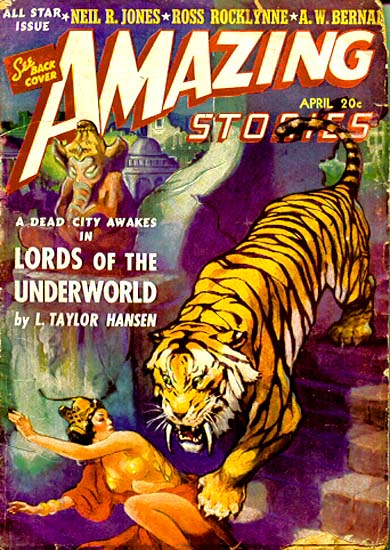
Cover art by J. Allen St. John.
Three guys are fooling around in the California desert, doing archeological stuff. One of them very casually mentions that he's built a time machine. The main character (the other two disappear from the story quickly) sends himself back thousands of years.
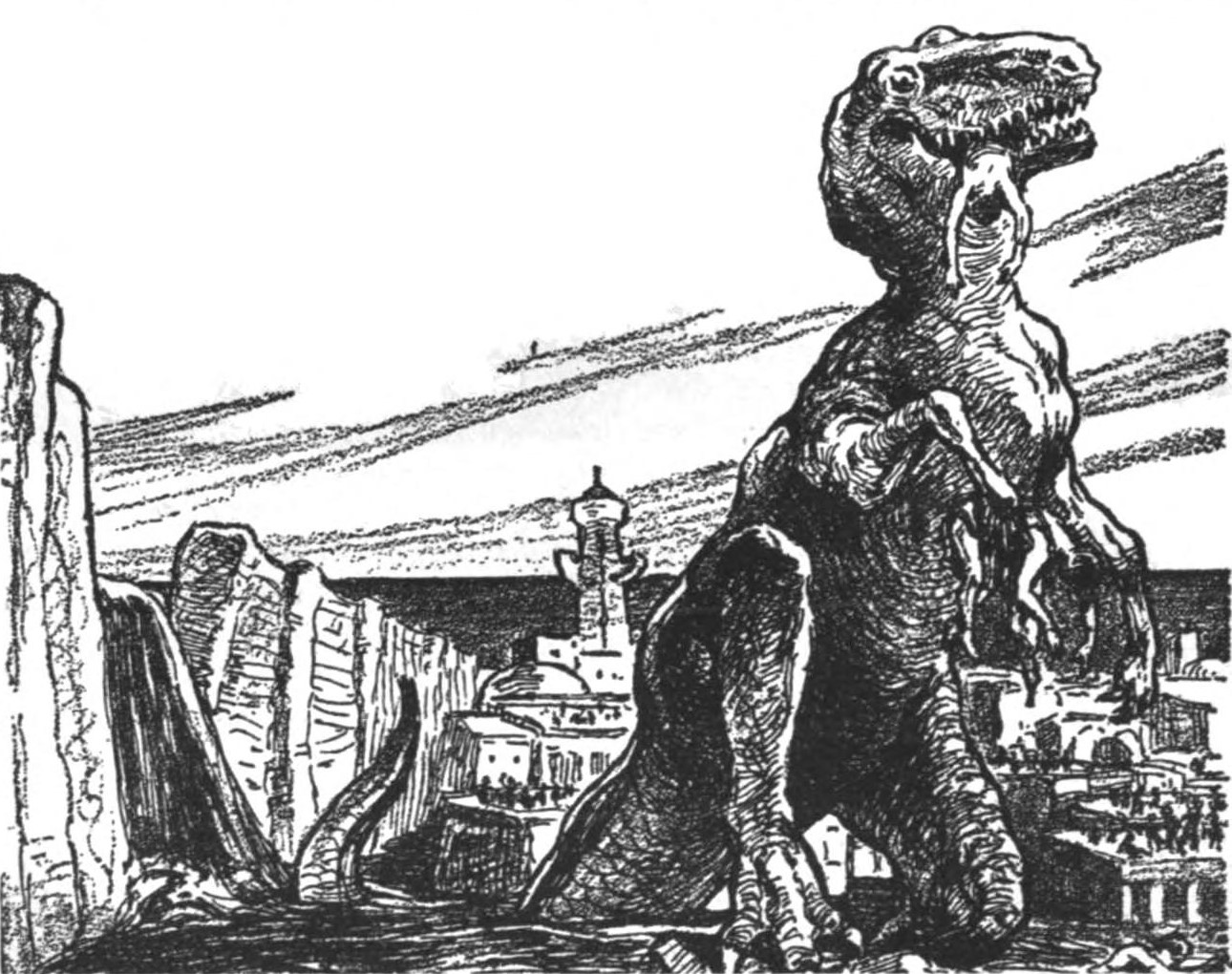
Illustration by St. John also.
This leads to a rip-roaring adventure, as the hero defeats an evil empire nearly by himself. There's a beautiful princess to help him, a sinister cultist to destroy, vampire bats, a saber-toothed tiger, and, yes, a dinosaur. Lots of stuff goes on.
It's all nonsense, of course. There are some nice descriptions, but the whole thing is pretty darn goofy. The open-ended conclusion suggests a sequel, but I don't think there was one.
Two stars.
Between Two Worlds, by Milton Lesser
The December 1955 issue of the magazine is the source of this fantasy story.
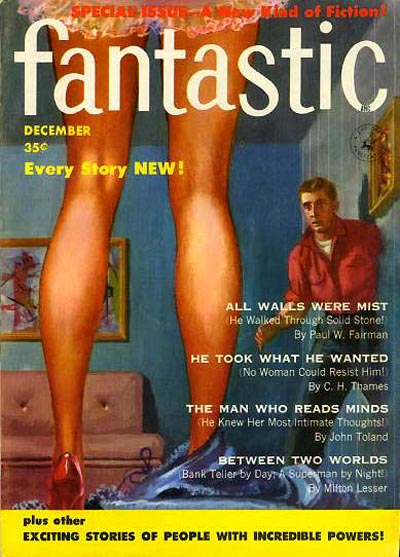
Cover art by Edward Valigursky.
A meek fellow has dreams about being Jason from mythology. Of course, he really is living as the legendary hero. He falls in love with the warrior maiden Atalanta, fights with Hercules, wins the golden fleece, and so forth. If you've seen the nifty movie Jason and the Argonauts, you know what to expect. There's a surprise ending that's not surprising.

Illustration by Louis Priscilla.
This piece comes from a brief, odd period in the history of Fantastic when it was dedicated to wish fulfillment stories. Or, as you can tell from the cover, male fantasies. It's not as openly voyeuristic as the other stories seem to be, judging by their descriptions, although Atalanta is stark naked at one point.
As a retelling of an old story, it's OK. Otherwise, there's not much to it.
Two stars.
Bandits of Time, by Ray Cummings
This wild and wooly adventure comes from the December 1941 issue of Amazing Stories.
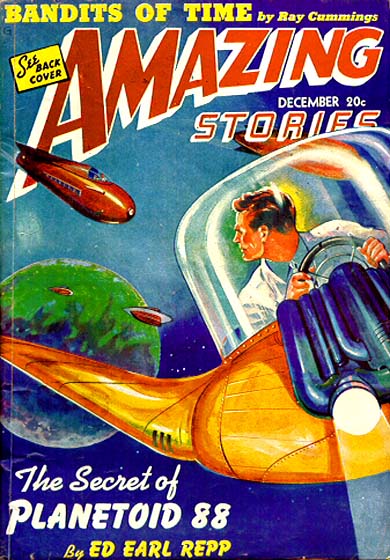
Cover art by Rod Ruth.
A mysterious fellow approaches a reporter and his blind girlfriend. He promises them a wonderful life if they'll meet him at a certain place in the middle of the night. He also says he'll restore the woman's sight.
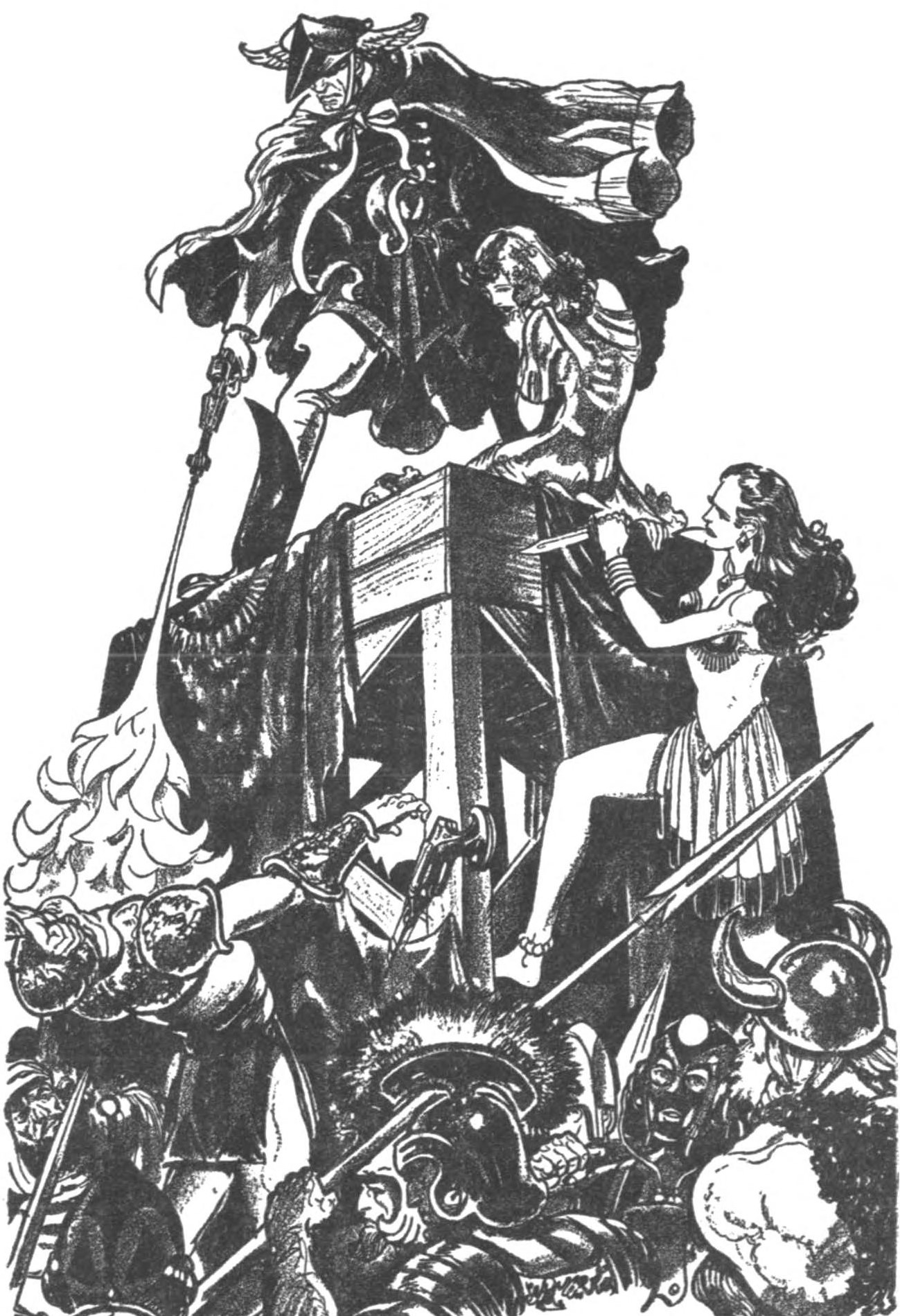
Illustration by Ruth as well.
Understandably, the reporter is suspicious. He takes his girlfriend home and shows up at the designated place with a fellow newsman, hoping for a big story. Instead, he discovers that the woman has been kidnapped. She and the two reporters are sent two million years into the future.
The weird man who approached them has a mad scheme to set up his own private empire in a distant future when humanity has devolved to a primitive state. He takes along male criminals from all periods of history, as well as kidnapped women to mate with them.
Can the two heroes escape being executed by the insane dictator? Will the woman regain her sight? Will the seductive would-be empress prove to be an enemy or a friend?
Two time travel yarns from 1941, both of them full of nonstop action. This one isn't quite as wacky as the first one, although there's a revelation about the madman's identity that comes out of nowhere.
Two stars.
The Monument, by Henry Slesar
We finish up with a mood piece from the July 1956 issue of Amazing Stories.
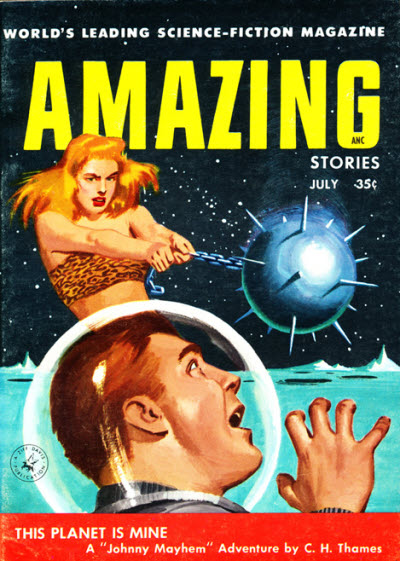
Cover art by Ed Valigursky.
A small group of tourists are on a spaceship headed for the Moon. A couple of them complain a lot. The captain opens the observation window to show them something.

Illustration by William Llewellyn.
The plot is very simple. The story accomplishes what it sets out to do. Maybe that's enough.
Three stars.
Half Empty or Half Full?
Either I'm in a bad mood or this was a very weak issue. Maybe I should have given out some three star ratings to some of the stories, maybe not. My time might have been better spent making a sandwich.

A full loaf of diet bread counts as half a loaf of regular bread, doesn't it?

![[September 14, 1968] Half a Loaf is Better Than None (October 1968 <i>Fantastic</i>)](https://galacticjourney.org/wp-content/uploads/2023/09/coverREDUCED.jpg)

![[January 6, 1966] Have Archaic and Beat It Too (February 1966 <i>Amazing</i>)](https://galacticjourney.org/wp-content/uploads/2021/01/amz-0266-cover-507x372.png)










![[September 12, 1965] So Far . . . Well, Fair (October 1965 <i>Amazing</i>)](https://galacticjourney.org/wp-content/uploads/2020/09/amz1065-cover-497x372.png)


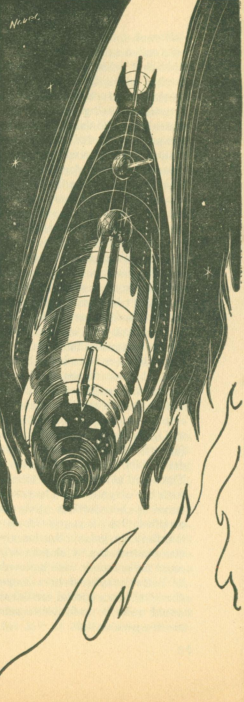
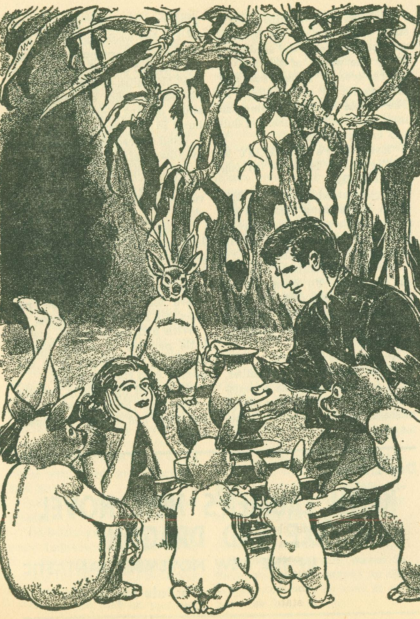

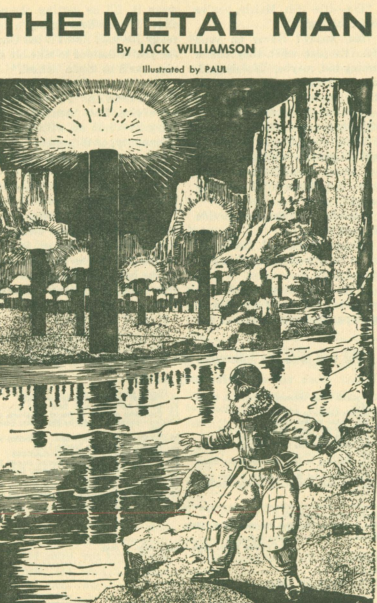
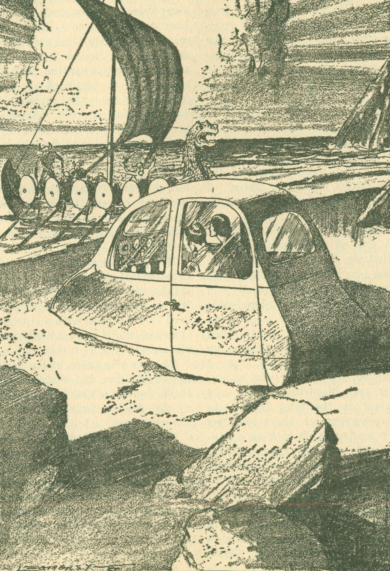

![[July 14, 1965] The New Dispensation (August 1965 <i>Amazing</i>)](https://galacticjourney.org/wp-content/uploads/2020/07/amz0865-cover-500x372.png)
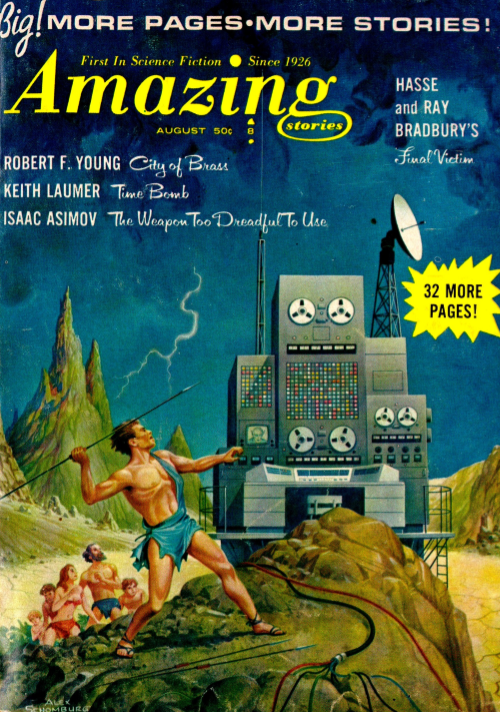




![[March 12, 1965] Sic Transit (April 1965 <i>Amazing</i>)](https://galacticjourney.org/wp-content/uploads/2020/03/amz-0465-cover-672x372.png)



![[February 12, 1965] Mirabile Dictu, Sotto Voce (March 1965 <i>Amazing</i>)](https://galacticjourney.org/wp-content/uploads/2020/02/amz-0365-cover-524x372.png)


